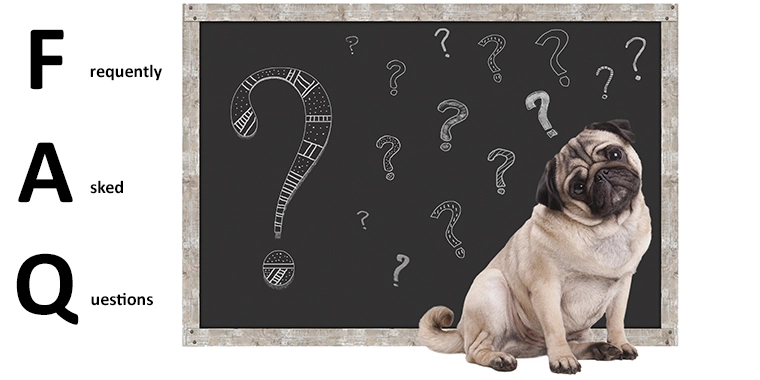
FAQ: What Is Included in Public Access Training?
Public access training focuses on making your service dog a dog that is welcome anywhere. This process includes several aspects:
- Solid obedience training.
- Comfort in public places.
- Ignoring distractions.
- Handler focus.
- Operating as a team with the handler.
The public access training process begins with intensive obedience training with us and expands with increasing public practice as we progress. We only go in public once the core aspects of the foundation are solid without distractions.
Too many trainers start the public component too early. Taking a dog in public is unproductive if it doesn’t have the tools to handle that well. We take it step-by-step and go by each dog’s needs.
Our public access training command repertoire includes the following markers and commands:
Markers
Markers are used to communicate with your dog and give clear guidance.
Okay: signals a release to liberty. The dog is allowed to do what it wants.
Good: a continuation or keep-going signal. It tells the dog it is on the right track. Keep doing what you’re doing.
Yes: signals the end of a command but not the end of the session. It marks a successful repetition and starts the reward event.
Uh-Uh: a non-reinforcement marker. It tells the dog it made a mistake and should try something else.
No: the penalty marker for unacceptable behaviors. It is only used when something can not be allowed.
Comands for Public Access Training
Commands are orders to perform a specific, trained behavior.
Out: drop whatever is in your mouth.
Off: get off that surface, person, sofa, etc.
Come: come to me.
Kennel: go into your crate.
Down: lie down and stay there.
Sit: sit and stay there
Leave It: don’t touch that..
Heel: come to my side and walk next to me as I move.
Empty: go potty.
Load Up: jump up into the car, etc.
Wait: stop, don’t move.
Exit: leave the area, get out of my way.
Things We Do Differently for Public Access Training
We do a few things differently regarding obedience for public access training than you may see elsewhere. Here are a few examples of what we mean by that.
Our ‘down’ and ‘sit’ commands have implied stays. That means, instead of always saying ‘down, stay’ or ‘sit, stay,’ we skip the ‘stay.’ We can’t think of a single scenario where one would want their dog to lay down or sit and not stay there. Can you? No need for additional words.
Our ‘down’ command also works at a distance as an emergency measure should you ever need to secure your dog in place for any reason, even if it is away from you.
The ‘Under’ Command
We don’t teach ‘under.’ ‘Under’ is often used to put dogs under tables and seats. But why do we need a separate command for what is essentially a down-stay? We don’t. Our dogs move fluently with their leashes, go down when told, and stay there. We can place them where needed and that is all that matters for public access training.
The ‘Place’ Command
‘Place’ is another command we removed. It’s another down-stay with a send-away. Why would you send your service dog away from you unless it’s related to a service task? Again, our ‘down’ command has this covered.
The ‘Empty’ Command
The ’empty’ command is used to offer the dog elimination before we enter offices, restaurants, or stores. Offering elimination beforehand helps avoid accidents, allowing people to ask you to remove your service dog from the premises. We want to prevent that. As a result, we make it a habit to offer elimination before and after any building entry and exit. Elimination is always offered without service dog gear. If your dog can go to the bathroom depends on when it last eliminated, ate, drank, etc. The point is not if it goes. The point is to offer it and for the dog to understand it. If it has something to eliminate, it will do so; if not, we move on.
We hope this outline provides a good overview on how we approach ro obedience for public access training. More about working with us.
